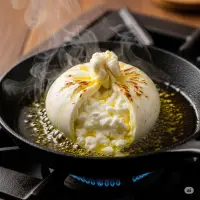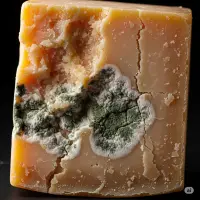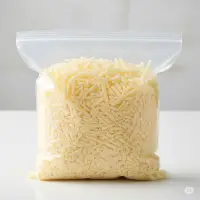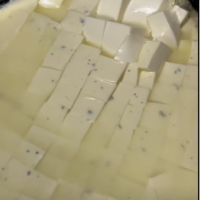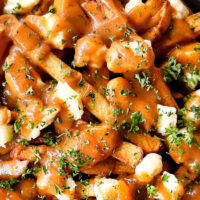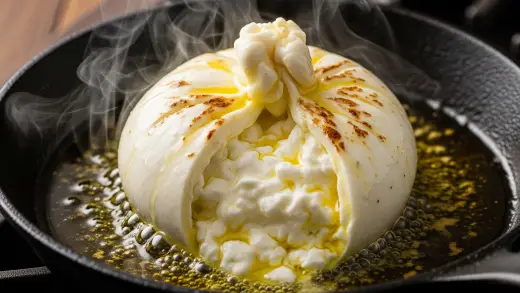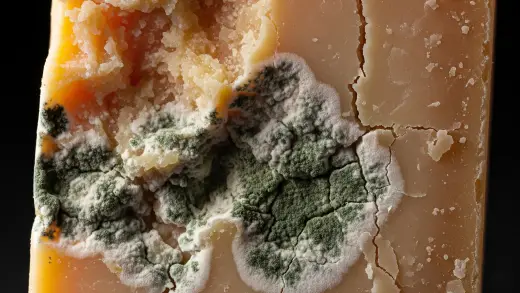Cheese rinds are made from a combination of the cheese itself and microbes. As the cheese ages, the outside dries out and forms a rind.
Imagine your favorite cheese. That outer layer, the skin, that’s the rind! Think of it like the peel on an apple, but for cheese. Cheese rinds aren’t just there for looks; they’re like a superhero cape for the cheese inside. They help protect the cheese as it ages, keeping bad stuff out and good moisture in.
There’s a whole world of rinds out there! Some are natural, growing on their own, while others are washed or rubbed with things to give them special flavors. You might find rinds that are fuzzy and white, hard and waxy, or even sticky.
Now, the big question: can you eat them? For many cheeses, the rind is totally safe and even adds a yummy, unique flavor.
But sometimes, like with really hard or waxy rinds, it’s better to leave them on the plate. It’s always a good idea to ask a grown-up or check the label if you’re not sure. So next time you have a piece of cheese, take a closer look at that rind – it’s a fascinating part of the cheesy story.
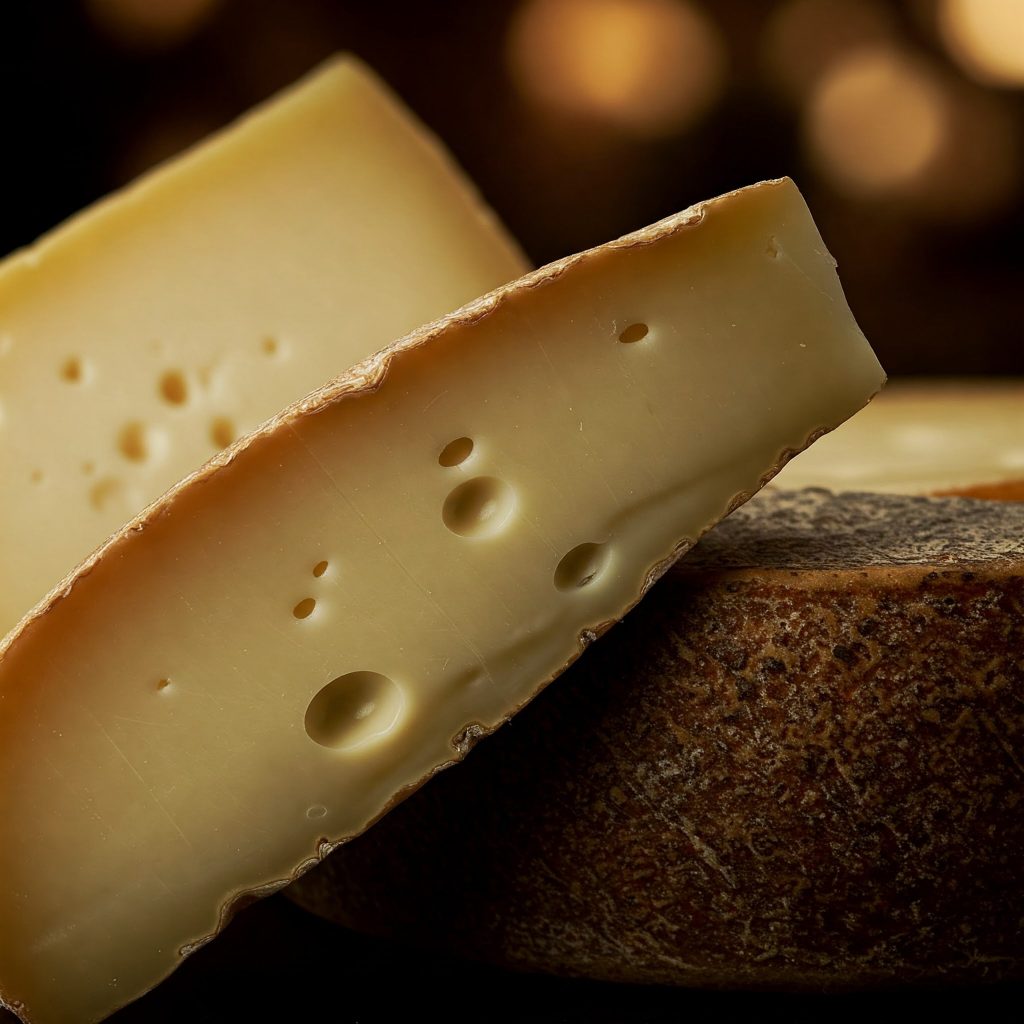
The Science Behind Cheese Rinds
Imagine you’re leaving something out to dry – it changes over time, right? Cheese is kind of similar. As cheese ages, it loses some of its water.
This drying out, along with salt, creates a surface that’s not so friendly for bad stuff but perfect for good bacteria and molds to grow. These tiny helpers are like the rind’s architects.
Moisture
Think of moisture as the starting point. As cheese ages, it naturally loses water, which helps form the rind.
Salt
Salt isn’t just for flavor; it also helps control which bacteria can grow on the cheese.
Bacteria and Mold
These are the superstars! Different types of bacteria and mold create those unique rinds and flavors.
Where the cheese is aged also matters. Think of it like a special room with just the right temperature and humidity. This environment helps the rind develop in its own special way.
What are Different Types of Cheese Rinds?
Get ready to meet some rind personalities!
Natural Rinds
These are like the cheese just being themselves as they age.
- What they are: Basically dried cheese, sometimes with a bit of salt or oil rubbed on.
- Cheese examples: Think of that hard outer layer on Cheddar, Parmesan, or Gruyère.
- What they taste and feel like: They can be hard and strong in flavor, sometimes a bit nutty or earthy.
Bloomy Rinds
These look like they’ve been sprinkled with a soft, white blanket.
- What they are: This comes from good, edible mold and yeast doing their thing.
- Cheese examples: You’ve probably seen this on Brie, Camembert, or Saint-André.
- What they taste and feel like: The rind is soft and creamy, and it adds a mild, mushroomy flavor.
Washed Rinds
These rinds get a special bath while they age!
- What they are: They get washed with salty water (brine) or even alcohol, which encourages certain bacteria to grow.
- Cheese examples: Ever tried Limburger, Munster, or Taleggio? They often have washed rinds.
- What they taste and feel like: These can be a bit stinky (in a good way for cheese lovers!) and have a salty, strong flavor. The rind can be a bit sticky.
Other Rinds (and Non-Edible Coverings)
Not all outer layers are meant to be eaten!
- Wax rinds: Like on Gouda and Edam, this is usually a colorful wax that keeps the cheese fresh – you don’t eat this!
- Cloth-bound rinds: Some Cheddars are wrapped in cloth. While part of the aging, you usually don’t eat the cloth.
- Leaf or bark rinds: Some fancy cheeses are wrapped in leaves or bark, but these aren’t typically for eating.
Are Cheese Rinds Edible? Safety and Considerations
Here’s a good rule to keep in mind: if the rind grew naturally as the cheese aged, you can usually give it a try! Think of those natural and bloomy rinds we talked about. They’re often part of the whole cheese experience.
However, there are some rinds you should definitely skip:
- Wax rinds: Remember those colorful wax coverings on some cheeses? Definitely peel those off before you dig in – they’re not for eating!
- Cloth-bound rinds: While the cloth helps the cheese age, it’s not something you’d want to chew on.
- Bark or leaf rinds: These are often used for flavor or looks, but they’re generally not eaten.
Now, let’s talk about safety. For most people, eating cheese rinds is totally fine. Sometimes, because bloomy rinds have mold, people worry about allergies. While it’s possible to be allergic to certain molds, it’s pretty rare to be allergic to the specific kind of mold used on cheeses like Brie.
Even if a rind is safe to eat, sometimes you might not want to. Here’s why:
- Off-flavors: If a cheese hasn’t been stored properly, the rind might develop some funky or unpleasant tastes.
- Too tough: Some natural rinds can get really hard and chewy as the cheese ages, and you might not enjoy the texture.
So, when you’re faced with a rind, think about what kind it is. If it’s natural or bloomy, go ahead and try a little bit! If it’s waxy, cloth, or bark, leave it on the side. And if it looks or smells a bit off, it’s always best to play it safe and skip it. Happy cheese tasting!
The Flavor Factor: How Rinds Impact Taste
Let’s get to the exciting part: how do these rinds actually make the cheese taste?
Think of the rind as a flavor booster for the cheese inside. It’s not just a protective layer; it’s a key player in creating those amazing and complex tastes and smells you get from different cheeses.
A Symphony of Flavors and Aromas
Rinds can bring all sorts of interesting notes to the party. You might get earthy, nutty, or even a bit spicy from a natural rind.
Bloomy rinds often add a subtle mushroomy or grassy flavor. And those washed rinds? They can be bold and bring a pungent, sometimes even barnyard-like aroma and a salty taste.
Rind Type = Flavor Difference
Just like different fruits have different peels with unique flavors, different rind types bring their own thing to the cheese. That fuzzy white rind on a Brie will taste very different from the hard, dark rind on an aged Cheddar.
Flavor Fusion
The rind doesn’t just sit on the outside; it actually talks to the cheese inside! As the cheese ages, flavors from the rind can seep into the paste (that’s the soft part of the cheese).
This interaction creates a more complex and layered flavor throughout the whole cheese. Sometimes, the cheese right under the rind will have a totally different texture and taste than the center.
So, next time you’re enjoying a piece of cheese with the rind, take a moment to really taste it. You might be surprised by the extra layer of flavor and aroma that the rind brings to the table! It’s all part of the delicious magic of cheesemaking.
Tips for Enjoying Cheese Rinds
So, you’ve got a piece of cheese with a rind you’re ready to try. Here are some tips to make the most of it:
Go for it (sometimes)
If you’ve got a natural or bloomy rind, try eating a little bit of the cheese along with the rind. You might find that the flavors work really well together! Sometimes the rind adds a nice texture contrast too.
Think about the match
Just like you pair wine with cheese, you can think about how the rind’s flavor might go with other things.
- Natural rinds: These often pair well with heartier flavors like apples, nuts, and even a bold red wine.
- Bloomy rinds: These are lovely with something light and fruity, like berries or a crisp white wine.
- Washed rinds: Their strong flavor can stand up to things like cured meats, pickles, and a slightly sweeter wine or beer.
Don’t toss those rinds
Even if you don’t love eating a rind on its own, some rinds can be fantastic in cooking.
- Parmesan rinds in soup: This is a classic! Toss a Parmesan rind into your simmering soup or sauce. It adds a wonderful depth of savory, cheesy flavor. Just fish it out before serving.
- Flavoring oils: You can sometimes infuse oils with the flavor of a hard cheese rind.
So, get adventurous with your cheese rinds! Sometimes the most interesting flavors are hiding just on the outside. Just remember to use your best judgment and enjoy the cheesy exploration.
Conclusion
So there you have it – the amazing world of cheese rinds! From their science-y beginnings to the incredible flavors they bring, rinds are a big part of what makes each cheese unique.
Don’t be shy – next time you have a chance, be a little adventurous and taste that rind! You might just discover a whole new layer of deliciousness. The rind isn’t just the outside; it’s a key ingredient in the wonderful adventure of cheese.




